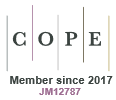
Australian Journal of Chemistry
Volume 66 Number 5 2013
CH13042Chemoselective Activation Strategies of Amidic Carbonyls towards Nucleophilic Reagents

Important advancements have been made in recent years in the development of chemoselective additions of nucleophiles to well known inert amide carbonyls in the presence of multi-electrophilic substrates. Herein, we present the most relevant results showing how carbonyl amides can be chemoselectively functionalised in the presence of electrophilic functionalities such as Weinreb amides.
CH12514A Review of Catalytic Systems for Glycerol Oxidation: Alternatives for Waste Valorization

The oxidation of glycerol that is generated as a by-product of the transesterification of animal fat and vegetable oils leads to the formation of aldehydes, carboxylic acids, and ketones. It is one of the most important challenges in chemistry because the conversion and selectivity for a specific product vary according to the reaction conditions, catalyst selected, and oxidation method.
CH13012Critical Review of Water Radiolysis Processes, Dissociation Products, and Possible Impacts on the Local Environment: A Geochemist

When liquid water is subjected to ionizing radiation it breaks down to hydrogen, hydroxyl, superoxide, and peroxide radicals, and solvated electrons all of which have the potential to change redox conditions in subsurface environments. This process might have an adverse effect in trace metal partitioning in nature.
CH13035Telomerase Inhibition Studies of Novel Spiroketal-Containing Rubromycin Derivatives

Rubromycins are potent quinone-containing inhibitors of human telomerase. Given that previous studies have implicated the spiroketal ring to be the active moiety in telomerase inhibition, we synthesised various heterocyclic analogues based on the rubromycin core in order to evaluate their telomerase inhibitory potential.
CH12218Kinetic Studies on the Reactions of [(TLtBu)PtCl]+ and [Pt(tpdm)Cl]+ Complexes with Some Thiols and Thioethers

The kinetics and mechanism of the substitution reactions of the complexes [(TLtBu)PtCl]+ and [Pt(tpdm)Cl]+ with S-methyl-L-cysteine (S-Met-L-Cys), L-cysteine (L-Cys), glutathione (GSH) and L-methionine (L-Met) were studied. The order of reactivity of studied ligands is: S-Met-L-Cys > L-Met > GSH > L-Cys. The complex [Pt(tpdm)Cl]+ is more reactive than [(TLtBu)PtCl]+.
CH12483Transition-Metal Supramolecular Complexes with 2-Phenylacetate and a Bent Dipyridyl Ligand: In Situ Hydrothermal Syntheses, Crystal Structures, and Photoluminescent Properties

A series of seven CoII, CdII, ZnII, MnII, and NiII supramolecular complexes have been constructed using 2,5-bis(4-pyridyl)-1,3,4-oxadiazole and 2-phenylacetate generated in situ from the hydrothermal decarboxylation of 2-phenylmalonic acid, which show diverse structures regulated by inorganic salts and solid-state fluorescence at room temperature.
CH12460Effects of Ni Particle Size on Hydrogen Storage of Ni-Doped High Surface Area Activated Carbon

Catalyst size is a crucial factor that determines the enhancement of the hydrogen storage capacity of Ni-activated carbons.
CH12564Cytotoxicity In Vitro, Apoptosis, Cellular Uptake, Cell Cycle Distribution, Mitochondrial Membrane Potential Detection, DNA Binding, and Photocleavage of Ruthenium(II) Complexes

Two new ligands and their ruthenium(ii) complexes [Ru(bpy)2(NHPIP)]2+ (Ru-1), [Ru(phen)2(NHPIP)]2+ (Ru-2), [Ru(bpy)2(AHPIP)]2+ (Ru-3), and [Ru(phen)2(AHPIP)]2+ (Ru-4) have been synthesized and characterized. Their cytotoxcity in vitro, apoptosis, cellular uptake, cell cycle arrest, mitochondrial membrane potentials, DNA binding, and photocleavage were investigated.
CH12484Ni/MWCNT-Supported Palladium Nanoparticles as Magnetic Catalysts for Selective Oxidation of Benzyl Alcohol

Uniformly dispersed Pd@Ni bimetallic nanoparticles (4 nm) on multi-walled carbon nanotubes are prepared and used as catalysts for the oxidation of benzyl alcohol resulting in a 99 % conversion and demonstrating a higher catalytic activity than that of a Pd/MWCNT catalyst at the same Pd loadings. The catalyst is easily isolatable due to its magnetic properties.
CH12557Monitoring the Early Stage Self-Assembly of Enzyme-Assisted Peptide Hydrogels

The early stage kinetics of the enzyme catalysed self-assembly of an ultra short peptide hydrogel was examined. Gels formed within minutes at physiological pH to give fibrous ordered networks. Lag times associated with the sol-gel transition points were characterised to reveal a minimum concentration of self-assembling species required for hydrogel formation. 1H NMR spectroscopy was also used to monitor hydrogel formation and measure reaction rates during early stages of self-assembly.
CH12457Effect of pH, Buffer, and Viscosity on the Photolysis of Formylmethylflavin: A Kinetic Study

Photolysis of formylmethylflavin (FMF) takes place by a bimolecular redox reaction involving a triplet state and a ground-state molecule followed by the formation of charged and neutral radicals. The neutral radicals may give rise to degradation products. The rate of reaction is influenced by pH, phosphate buffer, and solvent viscosity.
CH12487Synthesis of a Novel Diol-Functionalized Poly(ethylene glycol)-Bridged Dicationic Ionic Liquid and its Application in Copper-Catalyzed Amination of Aryl Halides

A novel diol-functionalized poly(ethylene glycol)-bridged dicationic ionic liquid ([diol-PEG1000-DIL][PF6]) was prepared and used as an efficient and reusable ligand for copper-catalyzed amination.
CH12561Synthesis and Electroluminescence of Thieno-[3,4-b]-pyrazine-cored Molecule with Fluorinated Shell

A novel thieno-[3,4-b]-pyrazine-cored molecule with a perfluorinated shell serves as a red fluorescent emitter in non-doped organic light-emitting diodes and exhibits good electroluminescence.
CH12537Aggregation of Hydrogen Bonded Dimeric Tri-Organotin Amino Substituted Pyrimidine-2-Thiolates

Six tri-organotin thiolates with 4-amino and 4,6-diaminothiolate are studied. The compounds form stable dimers through intermolecular hydrogen bonds. Further aggregation in the solid state, propagated through interdimer weak N–H⋯RS and N–H⋯Rπ interactions, gives different three-dimensional networks.
CH13054Ionic Liquids with Solvatochromatic and Charge-Transfer Functionalities Incorporating the Viologen Moiety

‘Liquid viologen’ derivatives are synthesised and their solvatochromic and charge transfer properties are demonstrated.



